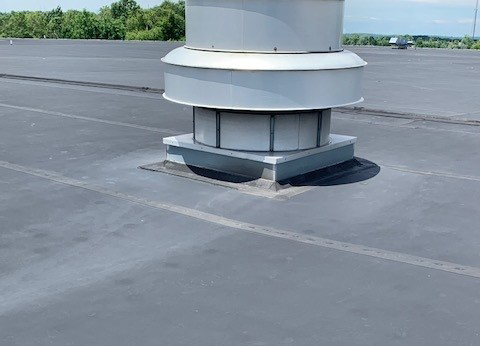EPDM is a type of black rubber roof and is excellent for UV retention due to the nature of the carbon black rubber that is used. They are also extremely resistant against strong winds.
There are also Ballasted EPDM roofs, which are like regular EPDM roofs only with the addition of a protective layer of ballasts or stones. Ballasted roofs allow for protection against fire, hail, and destructive debris. These types of roofs are great for any building that could potentially be vandalized like schools, as well as any in areas with harsh weather where debris and the general elements could cause damage. Its two primary ingredients are ethylene and propylene, which are derived from oil and natural gas.
When an EPDM roof reaches the end of its life span (20+ years), it can be recycled into new roofing material.
What are some advantages of EPDM roofs?
- Longest lasting out of the three single-ply roof options we offer (EPDM, PVC, TPO)
- Most cost effective for repairs
- Very fast and easy installation
- Can handle extreme hot and cold temperatures
- Fire resistant
- Recyclable depending on the area
What are some problems with EPDM roofs?
Even though EPDM is an incredible durable material, if it is installed incorrectly, it can cause damage down the road with shrinkage and damage to the membrane itself. These roofs are also at risk for puncture from debris caused from weather, which can lead to leaks and other damage. If you live in an area that averages lots of hail, you will want to go with a thicker membrane which will cost a little more. Regular roof inspections from experts can minimize problems from occurring. For example, if you find a leak, then the water has gotten past the membrane which can cause the membrane to rot or bubble. This is a much larger problem than just repairing a leak. It’s tough to say without a thorough inspection just how costly a repair will be which is why at ASI we offer annual roof inspections to be able to prevent costly repairs, diagnose critical issues, and determine the best way to solve the particular problem at hand.

